While we familiarise ourselves with the dining room and sun deck, where we will spend most of our time while on board, the staff deliver our luggage to the cabins.
Our trip begins with an upriver journey towards Tonle Sap, the largest freshwater lake in Southeast Asia, and then back down towards Phnom Penh, Cambodia’s capital, 115km (71 miles) to the south, where the Tonle Sap River meets the Mekong.
Our first stop is at the Andong Russey Pottery Community, in Kampong Chhnang, where red clay and ancestral traditions are employed in the production of pots, plates and other homeware items.
Our guide, Smiley, introduces us to the 72-year-old Mr Ry, who offers us rice wine before shimmying up a towering palm tree to collect sap, which is used to make palm sugar and wine.
Mid-climb, he pauses to pose with his arms in the air, surveying the basic stilted homes of the village, and land filled with milk fruit and citrus trees, vegetable patches, cows, and chickens.
We’re then invited to watch as a potter spins herself around her clay, dispensing with the need for a wheel.
The following day, with the boat docked at Kampong Tralach Leu, ox carts transport us through rice paddies to Wat Kampong Tralach Leu, a temple decorated on the inside with 18th-century murals depicting village life, where we are blessed by a monk.
A 20-minute minibus ride to the south, and in the shadow of Oudong Mountain, the Vipassana Dhura Buddhist Meditation Centre is home to a community of monks and nuns, some of whom chose to stay there to ease the burden on their families.
We are invited to roam freely – although silently, as it is prayer time – around the centre, with its temples and lake, before reboarding the ship.
As we cruise down the chocolate-coloured Tonle Sap River, we pass fishing villages on stilts accessible only by boat and painted in vivid colours – either to appeal to tourists or to help night fishermen find their homes in the dark; no one seems to know for sure.

Having tied up at the Phnom Penh Autonomous Port, where the boat will spend two nights, we are taken by bus to the city’s Royal Palace, with its Silver Pagoda and expansive Ramayana mural, and then to the Central Market (Phsar Thmey), a dark-yellow art deco building in the shape of a cross with a central dome, beneath which stand stalls selling everything from barbecued tarantulas to “genuine” fake watches.
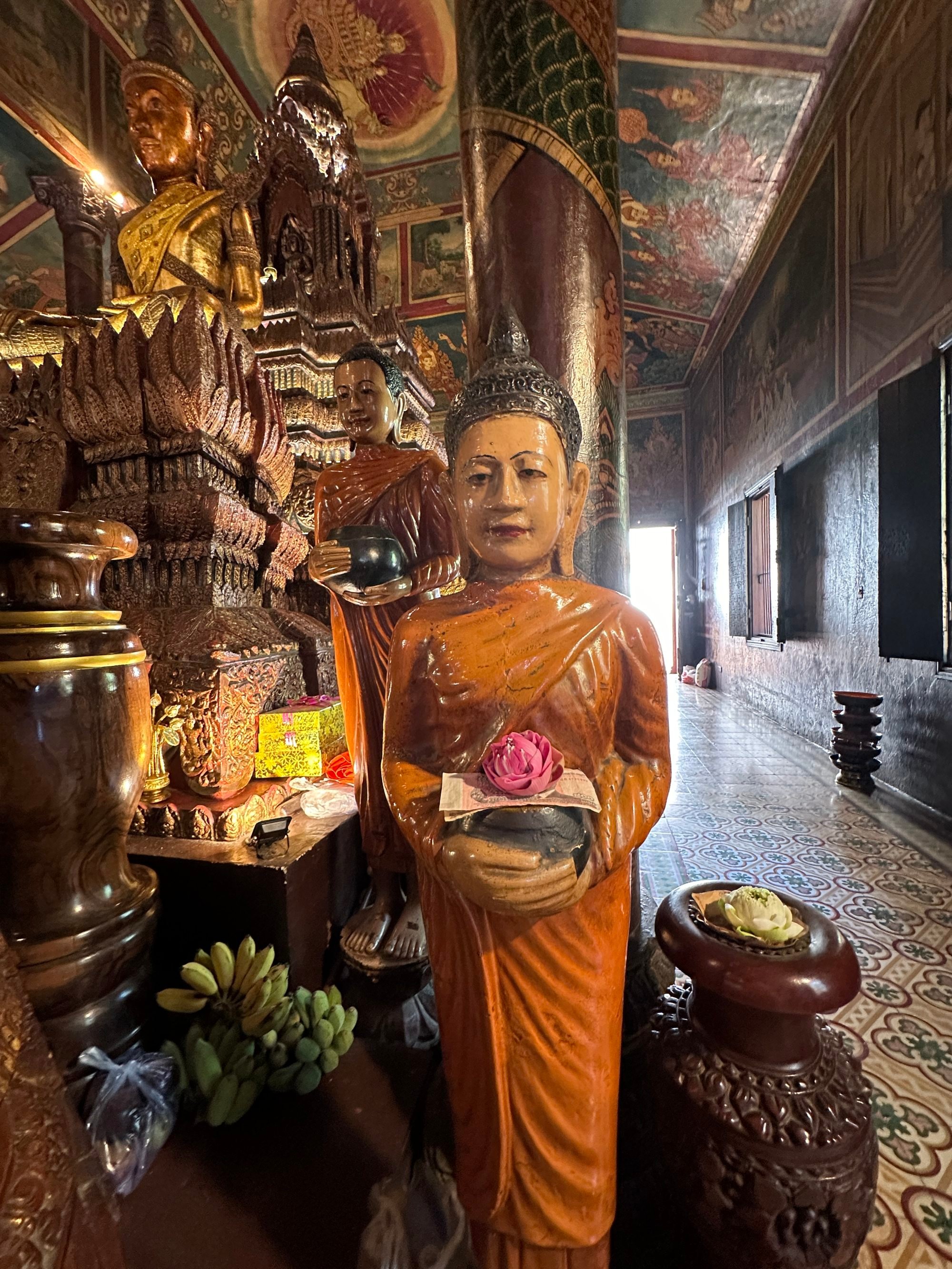
It will take two days to sail from Phnom Penh to Ho Chi Minh City and, although the Mekong looks much the same as the Tonle Sap, on this stretch there is more traffic and the shoreline is crowded with an increasing number of factories and homes, many with gardens extending down to the river’s edge.
Immigration formalities having been taken care of by the cruise company, we cross into Vietnam. We dock in Chau Doc, where we are treated to a cable car ride to the top of Sam Mountain, the highest in the Mekong Delta, for views out over the two countries this cruise encompasses.
Later that day, we swap our boat for a bus and then rowing boats that float through the Tra Su Cajuput Forest – more than 845 hectares (3.3 square miles) of waterways thick with lotus plants and lined with majestic cajuput trees. The serenity is broken only by the oars hitting the water and flocks of white-throated kingfishers.
The boat has mostly sailed during the day and moored at night at ports along the way. The one night on which we moor in the river, at Sa Dec, there is some movement from passing boats, but sleep comes easily.
The further south it flows, the busier the Mekong becomes, with sampans rowed by locals running errands and cargo ships laden with coal, fertiliser and vehicles.
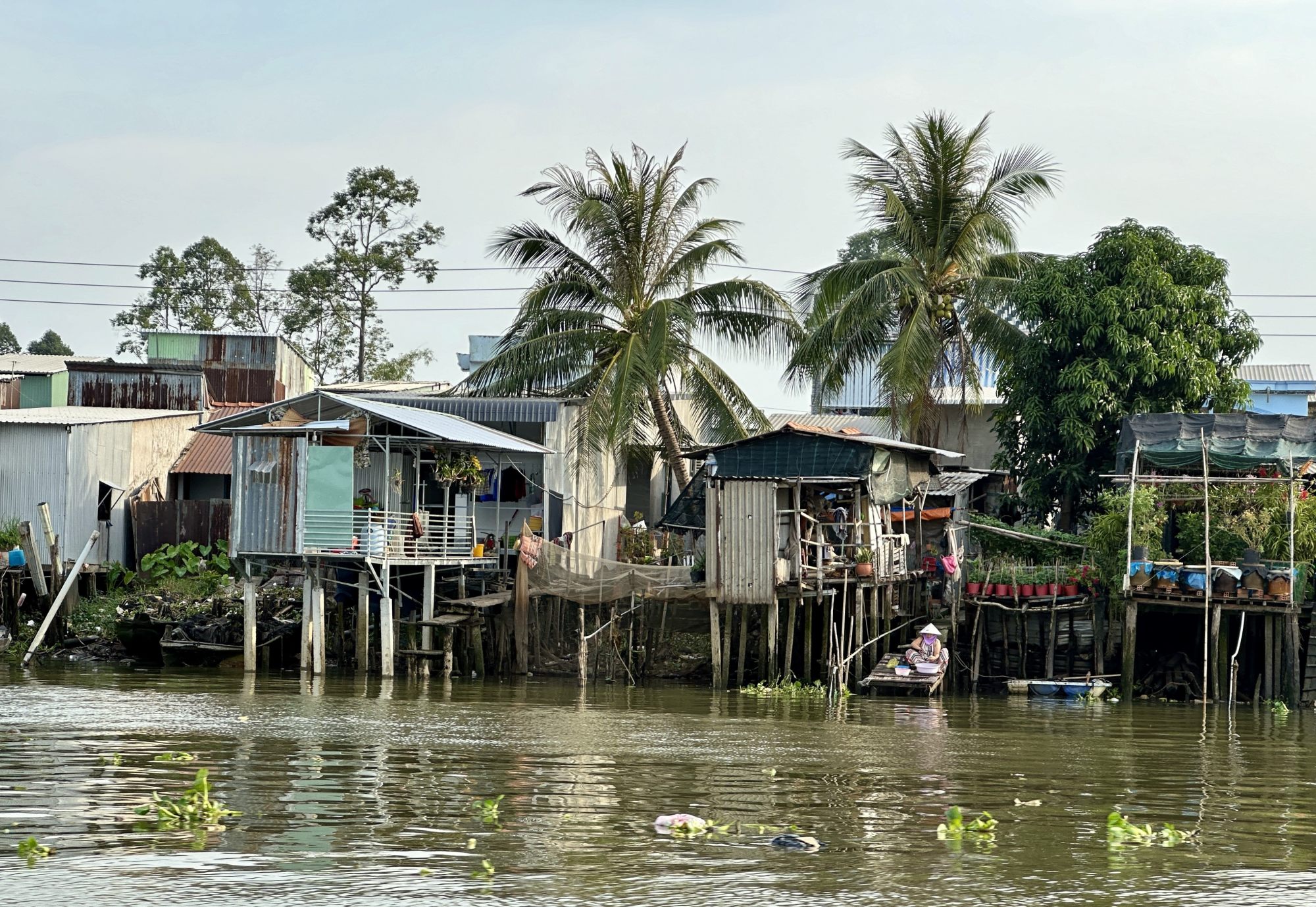
Our remaining days on board include visits to markets, temples, villages and islands such as Thoi Son, aka Unicorn Island.
The island’s pathways are bordered by bamboo forests and mango, papaya, pomelo and banana orchards, and lead to a craft village, where I sample honey tea with dried kumquat followed by a platter of fruit, eaten in order from sour to sweet: pineapple with chilli salt, pomelo, dragon fruit, papaya, jack fruit and longan.
All the while I listen to traditional folk songs sung by five women dressed in ao dai (tunic with silk trousers) and three musicians playing monochords, two-string fiddles and other ancient instruments.
We board a sampan to be rowed through canals framed by mangroves so thick with vegetation that huge palm leaves hang over the waterway, meeting in the middle and almost blocking out the sun.
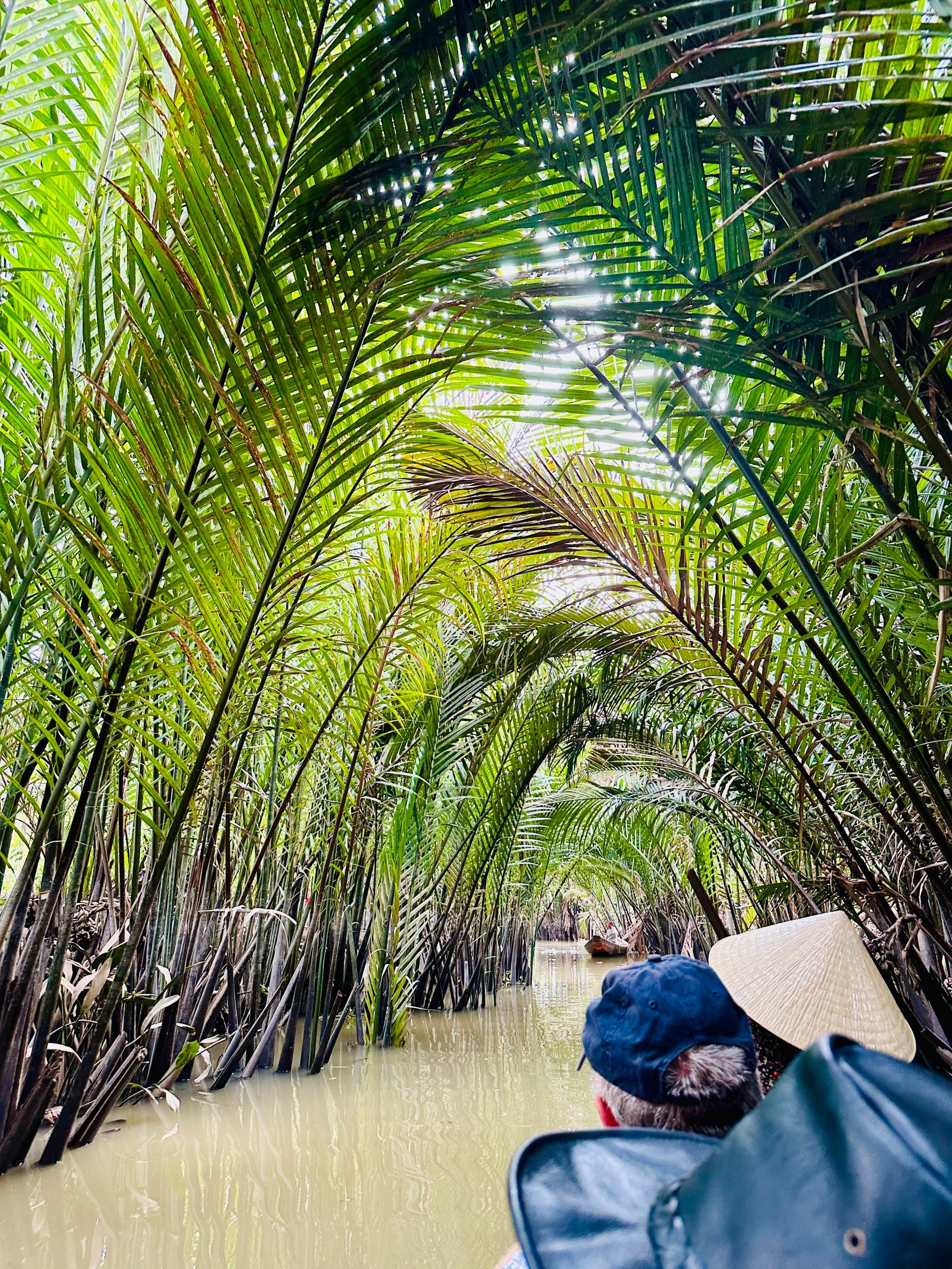
Sunset is a spectacular time to arrive in Ho Chi Minh City, as the golden light bounces off skyscrapers and reflects off the Saigon River.
With two nights still on board, we join a Vespa tour through Vietnam’s second city. As it is home to more than 7 million motorbikes, we leave the driving to Urban Venture Tours, as we zip through the slow-moving traffic.
Lively District 1 edges the Saigon River with plenty of rooftop bars and interesting buildings such as The Cafe Apartments, a 1960s block that features cafes and boutiques, and a few remaining residents.
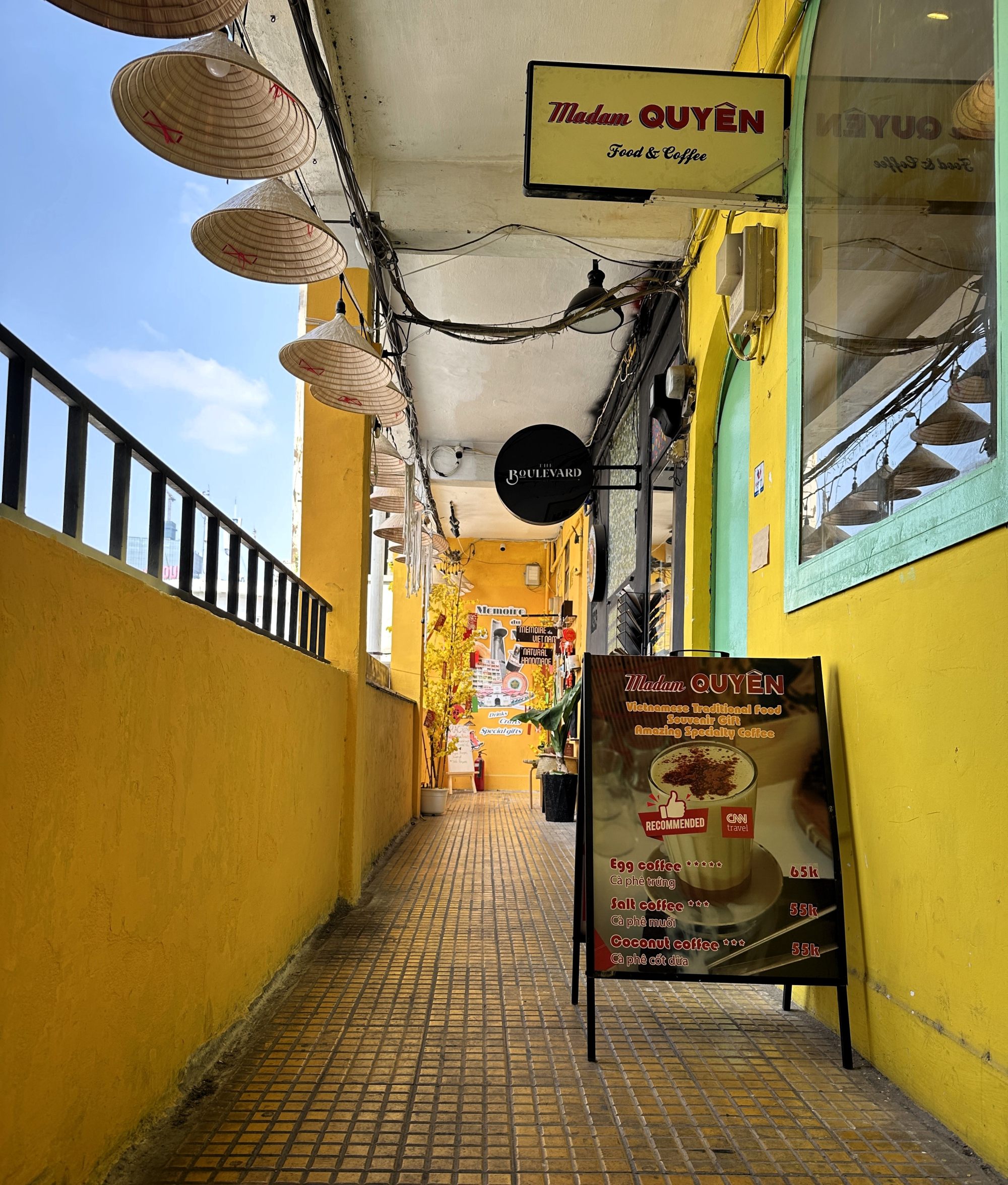
If you take the lift to the top floor you can leisurely work your way down, snacking on whatever takes your fancy: noodles, sushi, salads, cake, gelato, coffee, tea, juices and cocktails.
Rich in history and French colonial architecture, Ho Chi Minh City’s past is on full display at the Saigon Central Post Office (in front of which young ladies pose in colourful ao dai); the scaffolding-encased Notre Dame Cathedral; and the Opera House and City Hall, both of which seem to be favoured as video backdrops by K-pop bands.
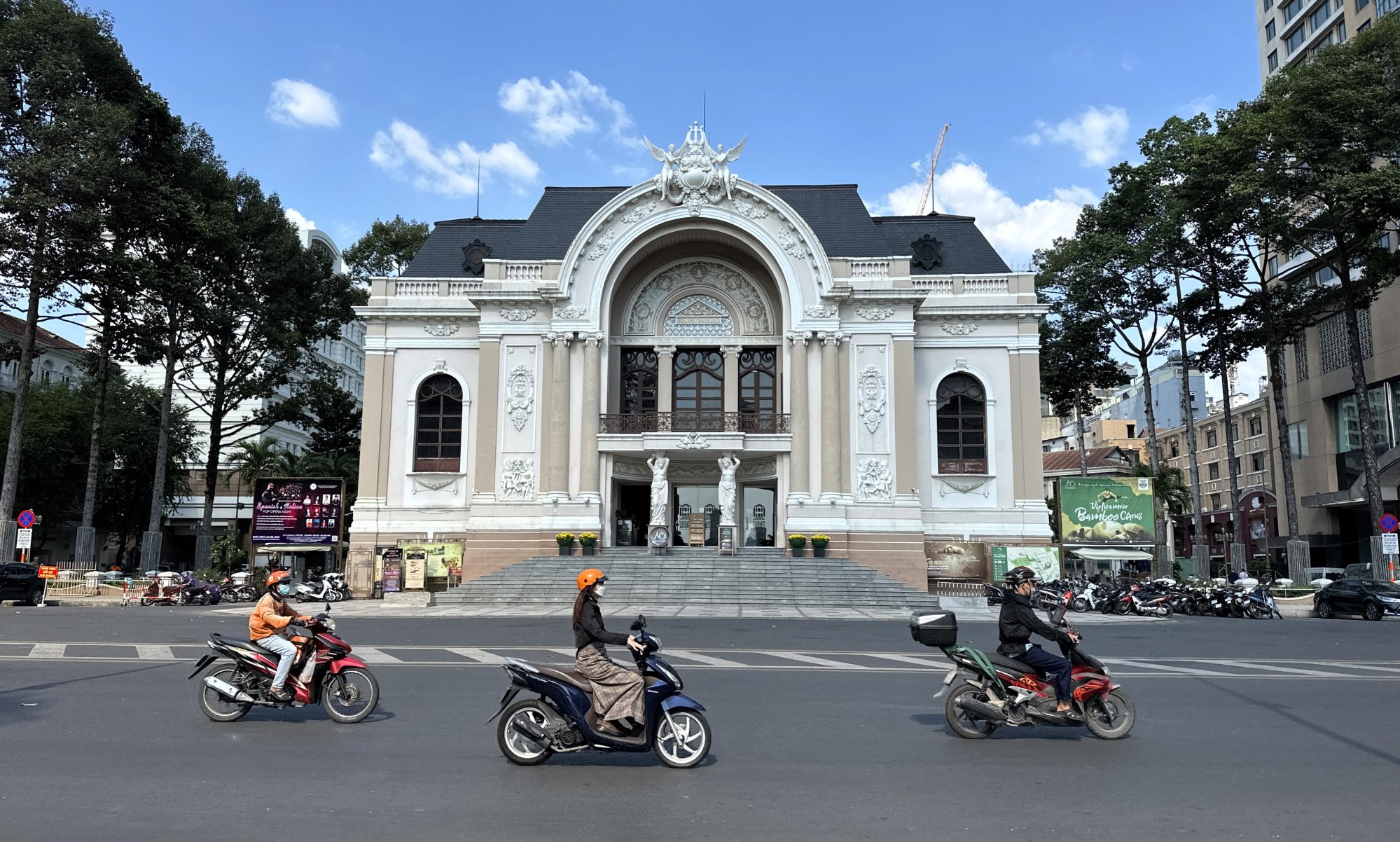
A wander through the mid-century Reunification Palace gives insight into the Fall of Saigon – the city’s former name – and where its new name came from.
Grand halls lead to elaborate dining rooms with tables set for Western and Eastern feasts, and the presidential residential quarters. Downstairs is a bunker featuring a telecommunications centre and sleeping quarters within a labyrinth of tunnels, and on the rooftop is a helicopter that once belonged to President Nguyen Van Thieu, who ruled Vietnam from 1967 to 1975.
Following a final breakfast on our trusty vessel, which has been tied up at Port Saigon, it is time to say farewell.
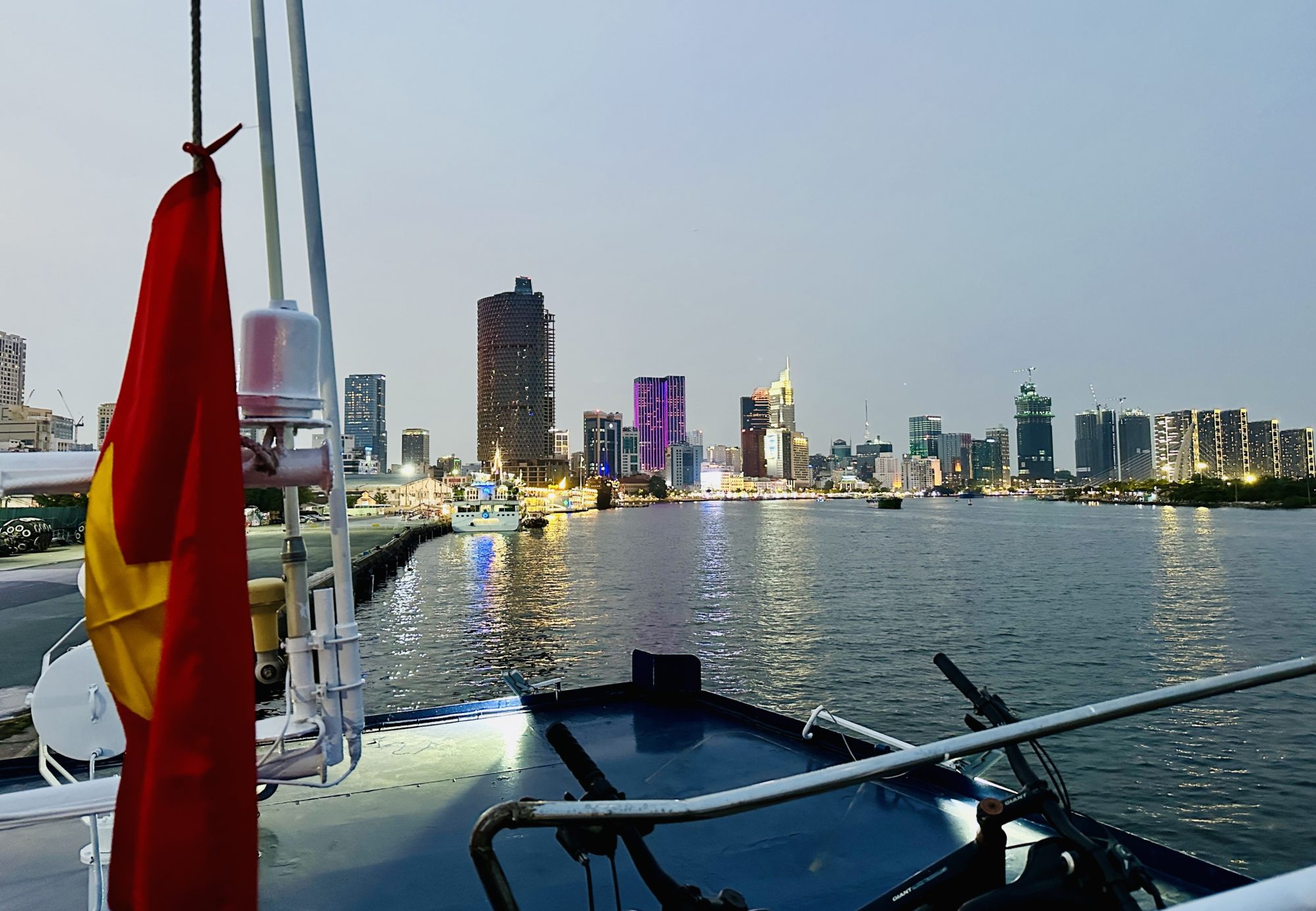
Standing on the dock, passengers say goodbye to one another as well as to the crew, who have already collected our luggage and loaded it onto the bus waiting to transfer us to our hotels.
As the bus pulls away from the port and into the urban fray, I am already missing the ebb and flow of humanity witnessed from the rivers.
The writer’s trip was provided by CF Mekong Cruises.







